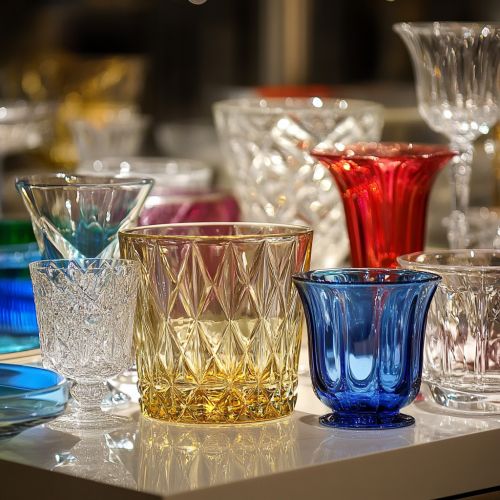Glass composition and properties
Introduction
Glass is a versatile and ubiquitous material characterized by its amorphous structure and diverse applications. Its composition and properties are pivotal in determining its suitability for various uses, ranging from everyday items like windows and bottles to specialized applications in optics and electronics. Understanding the intricate details of glass composition and properties is essential for advancing its development and application.
Composition of Glass
Glass is primarily composed of silica (SiO₂), which forms the backbone of its structure. However, pure silica glass is rare due to its high melting point and viscosity. To modify these properties, various additives are introduced, resulting in different types of glass with distinct characteristics.
Silicate Glass
Silicate glass is the most common form of glass, primarily composed of silica along with other oxides such as sodium oxide (Na₂O) and calcium oxide (CaO). These additives lower the melting point and improve the workability of the glass. Silicate glass is widely used in windows, bottles, and many other everyday applications.
Borosilicate Glass
Borosilicate glass contains silica and boron trioxide (B₂O₃), which enhances its thermal and chemical resistance. This type of glass is commonly used in laboratory glassware and cookware due to its ability to withstand sudden temperature changes without cracking.
Lead Glass
Lead glass, or lead crystal, includes lead oxide (PbO) in its composition, which increases its refractive index and density, giving it a sparkling appearance. It is often used in decorative items and optical lenses. However, due to health concerns, the use of lead glass has declined in favor of lead-free alternatives.
Aluminosilicate Glass
Aluminosilicate glass incorporates aluminum oxide (Al₂O₃), providing high strength and thermal stability. It is often used in demanding applications such as smartphone screens and aerospace components.
Specialty Glasses
Specialty glasses are designed for specific applications and include compositions such as phosphate glass, which is used in optical fibers, and chalcogenide glass, known for its infrared transmission properties.


Properties of Glass
The properties of glass are largely determined by its composition and structure. These properties include mechanical, thermal, optical, and chemical characteristics, which are crucial for its performance in various applications.
Mechanical Properties
Glass is known for its brittleness, which is a result of its amorphous structure. However, its strength can be enhanced through processes such as tempering and lamination. The hardness of glass makes it resistant to scratching, while its brittleness necessitates careful handling to prevent fracture.
Thermal Properties
Glass exhibits low thermal conductivity, making it an effective insulator. Its thermal expansion coefficient varies with composition, influencing its resistance to thermal shock. Borosilicate glass, for example, has a low thermal expansion coefficient, allowing it to withstand rapid temperature changes.
Optical Properties
The optical properties of glass, such as transparency, refractive index, and dispersion, are critical for applications in lenses, windows, and displays. The addition of certain oxides can modify these properties, enhancing the glass's ability to transmit or reflect light.
Chemical Properties
Glass is generally resistant to chemical attack, but its durability can vary with composition. For instance, borosilicate glass is highly resistant to acids, while soda-lime glass may be more susceptible to alkali attack. The chemical stability of glass is essential for its use in containers and laboratory equipment.
Applications of Glass
The diverse properties of glass make it suitable for a wide range of applications across various industries.
Construction
In construction, glass is used for windows, facades, and insulation. Its transparency and aesthetic appeal make it a popular choice for modern architecture. Innovations such as self-cleaning and energy-efficient glass have expanded its applications in this sector.
Electronics
Glass plays a crucial role in electronics, particularly in the production of displays, touchscreens, and optical fibers. Its electrical insulation properties and ability to be precisely manufactured make it indispensable in this field.
Optics
Optical glass is used in lenses, prisms, and other components that require precise light manipulation. Its high refractive index and clarity are essential for applications in cameras, microscopes, and telescopes.
Automotive
In the automotive industry, glass is used for windshields, windows, and mirrors. Safety glass, such as laminated and tempered glass, is designed to minimize injury in the event of an accident.
Art and Decoration
Glass is also valued for its aesthetic qualities, used in art, decoration, and jewelry. Techniques such as glassblowing and stained glass create intricate designs and vibrant colors.
Advances in Glass Technology
Recent advancements in glass technology have led to the development of smart glass, which can change its properties in response to environmental stimuli. This includes electrochromic glass, which adjusts its transparency with an electrical charge, and photochromic glass, which darkens in response to sunlight.
Conclusion
The composition and properties of glass are fundamental to its wide-ranging applications. By understanding and manipulating these factors, scientists and engineers continue to innovate and expand the potential uses of this versatile material.
